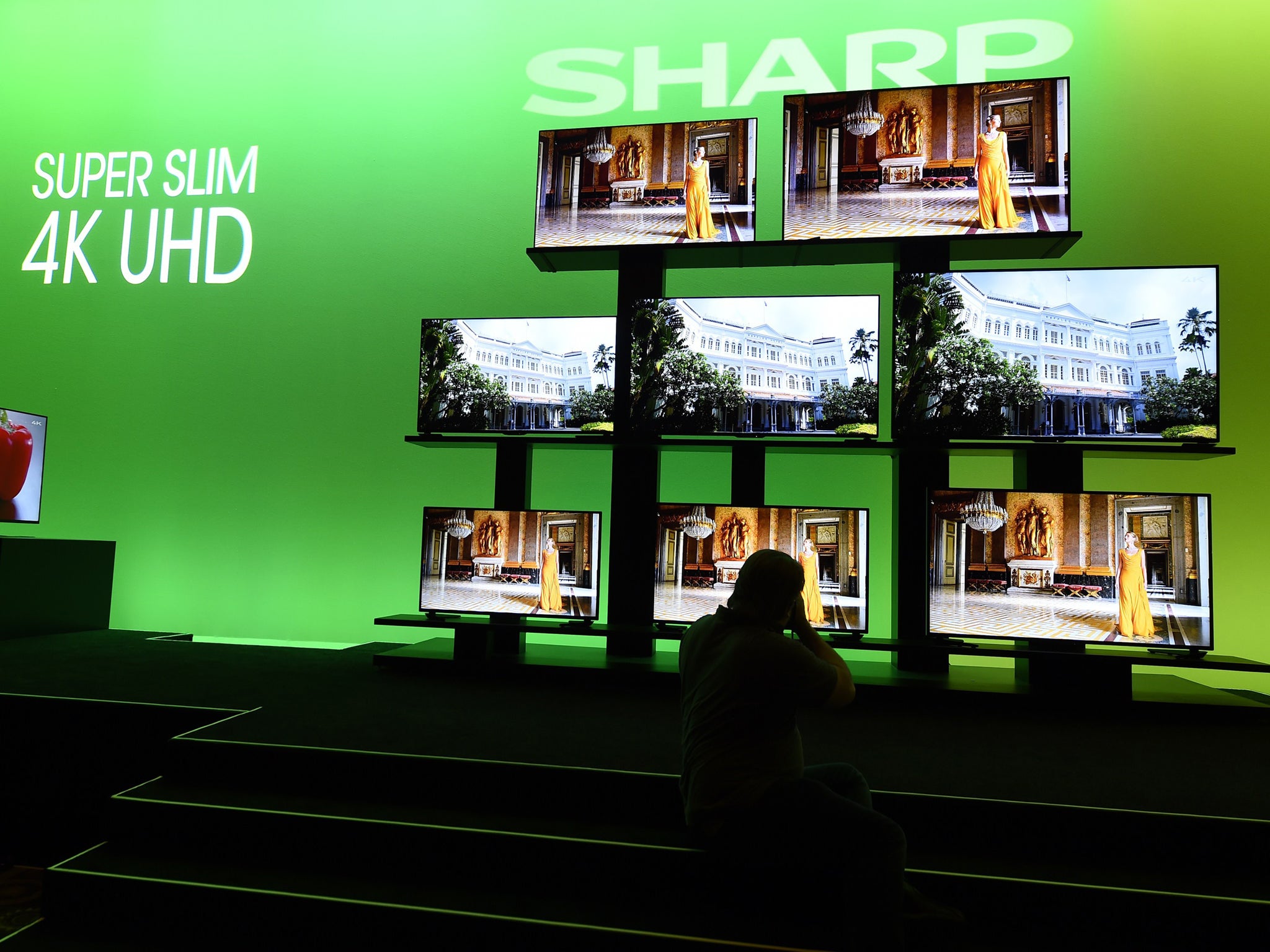Quantum dot, SUHD, 8K: The new TV set jargon
TV technology, and the jargon that describes it, has become an arms race. Here are the latest words you should know: 8K, UHD (and SUHD), quantum dot technology, curved TVs, Android TV and Tizen

TV companies are right now unveiling their new tellies at the Consumer Electronics Show in Las Vegas. That means a whole new wave of jargon to learn — some of it useful, some of it just marketing.
We’ve picked through the biggest announcements at CES so far to look at what could are set to be the big trends in telly technology. For better or worse, here are the things you’re going to be looking out for at TV shops in years to come.
8K
Most people haven’t got a 4K TV yet, let alone an 8K one, and it’s very difficult to get TV shows and films at the super-high resolution. 4K is just under four times the resolution of 1080p, that of most consumer TVs, and allows for huge but still super sharp TVs.
8K, as the name suggests, is an extension of that — twice the pixels across and down, leading to a four times higher resolution.
We’re not entirely there yet, but Sharp’s new TVs are focusing on subpixels that offer something like that resolution. The company’s selling the TV as a “Beyond 4K Ultra HD TV”, rather than 8K, but it’s an indication of what’s likely to come.
UHD (and SUHD)
Ultra-high-definition TV — known as UHD, UltraHD, UHDTV and Super Hi-Vision — is really another word for 4K, in most instances. (It also encompasses 8K, but there are few tellies actually using that resolution.)
It describes TVs that are widescreen and can carry at least 3840x2160 pixels. Many companies are switching to use it instead of 4K and it’s becoming used as an umbrella term for the new generation of resolutions.
SUHD is Samsung’s own brand of ultra-high definition displays. That’s partly a marketing exercise, but Samsung says its TVs stand out because they use quantum dot technology.
Quantum dot technology
Using nano crystals that are about two to ten nanometers in size, quantum dot technology allows for a wider colour palette and improved saturation.
Each of the tiny dots emits a different colour depending on how big it is, and a film of the dots sits in front of the LCD backlight, helping with colour and brightness.
LG got the start on announcing quantum dot TVs in December, and most of the big TV makers are set to announce their own versions.
Quantum dots were invented 33 years ago, but have gradually been coming to TV sets in the last couple of years.
Curved TVs
Curved TVs have been around for a while, but are steadily catching on with companies launching new and cheaper versions of the technology.
Proponents of curved TVs say that they help immersion, by moving into your peripheral vision and giving a wider field of view. Pictures look deeper and sharper, especially at the edges, and you can watch from a wider angle.
But they’re not all good. You have to sit in the right place to appreciate most of the advantages, they’re expensive, and can look awkward and reflective.
The trend has been mocked by some, including TV company Vizio. Unlike increasing resolutions and new colour technology, curved screens aren’t an obvious innovation and could easily go the way of 3D TVs — a nice idea, but not necessarily one that people want to buy.
Android TV and Tizen
The two big smart TV operating systems keep getting mentioned at CES. Smart TVs aren’t so new anymore but continue to get more and more clever, and the operating system is at the root of that.
Both are ways of turning your TV into something like a computer — enabling you to watch videos and surf the internet right from the telly itself.
Tizen began as Samsung’s attempt to stop using Android on its phones. Android TV is the telly-based version of the operating system.
Both work in much the same way, but if you’re thinking of buying a TV it’s worth picking through both – as well as the various other options – to see what you’d like to be powering your new smart TV.
Join our commenting forum
Join thought-provoking conversations, follow other Independent readers and see their replies
Comments
Bookmark popover
Removed from bookmarks